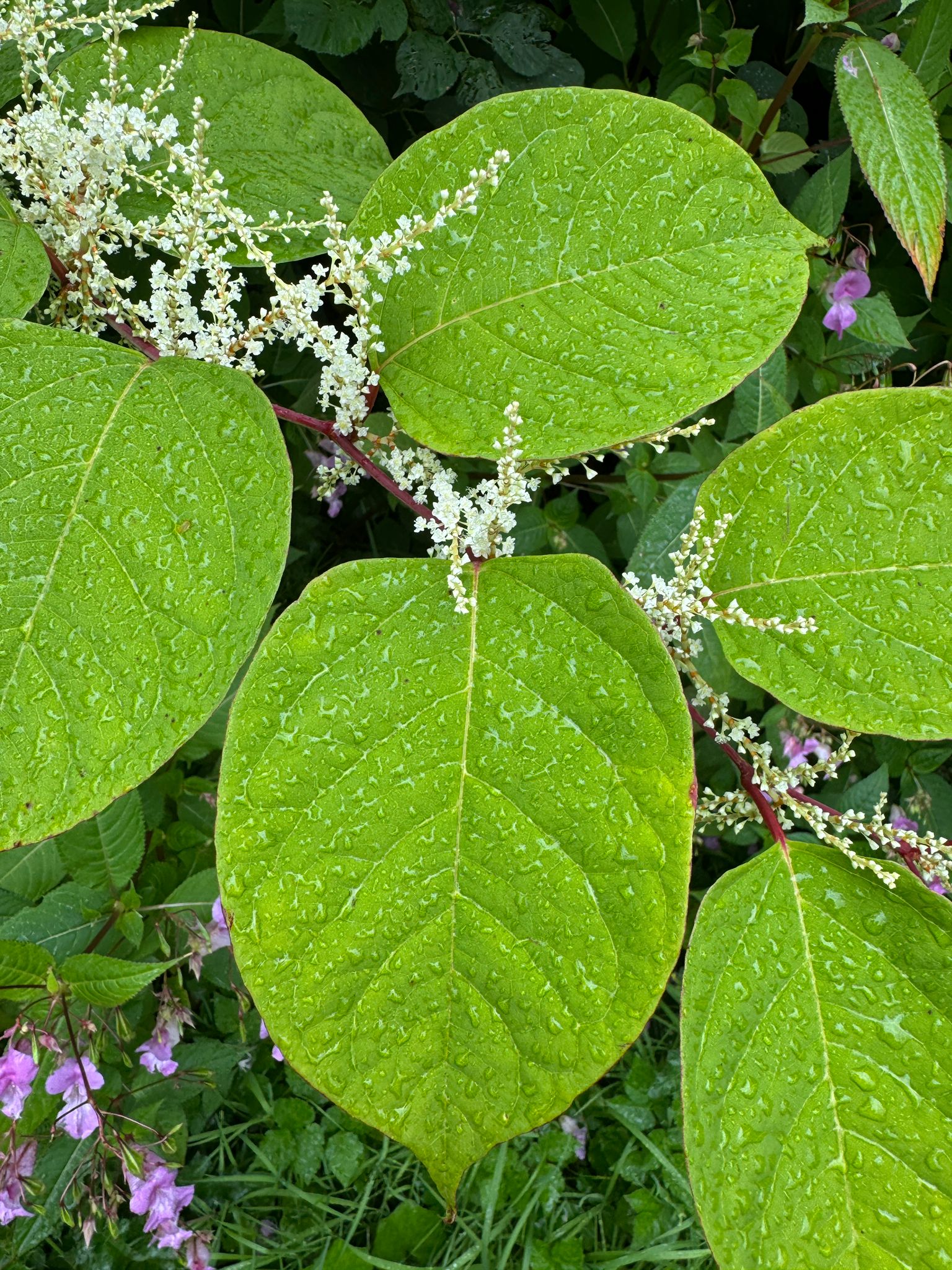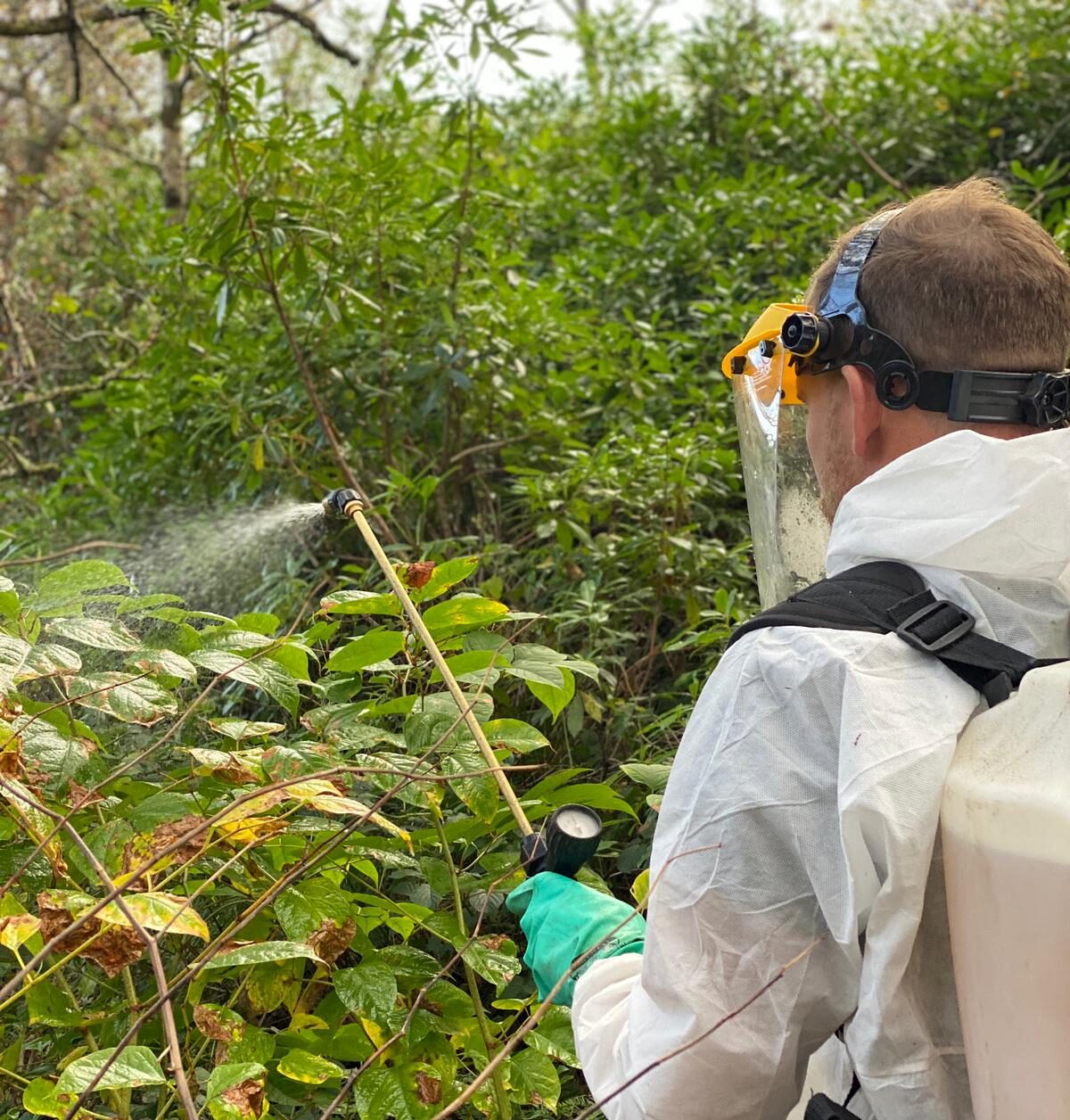Cotoneaster
Invasive Cotoneaster causing problems? We offer expert treatment and removal solutions for residential and commercial properties across Scotland.
What is Cotoneaster?
Cotoneaster is a dense, woody shrub originally introduced to the UK as an ornamental plant. Native to Asia and parts of Europe, Cotoneaster was brought to the UK for landscaping in the 1800s.
It is now classed as an invasive non-native species and is commonly found in gardens, hedgerows, and along railway lines, particularly in urban and rural areas of Scotland.
This fast-spreading shrub produces red berries and glossy leaves. Several Cotoneaster species—especially Cotoneaster horizontalis and Cotoneaster integrifolius—are known to outcompete native plants and thrive in disturbed soils, dry slopes, and stone walls.
How Does Cotoneaster Spread?
Cotoneasters ability to spread via bird-dispersed seeds and root suckers means it can rapidly establish in new areas, particularly where soil has been disturbed.
Issues Caused by Cotoneaster
What are the Environmental and Structural Risks?
Cotoneaster invades sensitive habitats such as limestone grasslands, displacing native species and reducing biodiversity. Its aggressive growth can dominate ecosystems and change soil chemistry, making recovery difficult for native flora.
What are my Legal Responsibilities?
Some Cotoneaster species are listed under Schedule 9 of the Wildlife and Countryside Act 1981. It is an offence to plant or allow these to spread into the wild. Property owners must act to prevent their spread to neighbouring land or public spaces.
Identification of Cotoneaster Throughout the Year
Seasonal Growth Cycle
- Spring: New leaf growth and small pink-white flowers begin to appear.
- Summer: Shrubs expand quickly and may start producing berries.
- Autumn: Bright red berries ripen, attracting birds which disperse seeds.
- Winter: Many species remain evergreen or semi-evergreen.
Detailed Cotoneaster Characteristics
- Stems: Woody, sprawling branches often rooting where they touch the ground.
- Leaves: Small, dark green and ovate with a leathery texture.
- Flowers: Clusters of tiny pink or white flowers, blooming late spring.
- Berries: Bright red berries persist through autumn and winter.
- Roots: Shallow fibrous root systems; can regenerate from fragments.
Treatment and Control of Cotoneaster
How to Remove Cotoneaster
At JBB Knotweed Solutions Ltd, we offer safe, effective control methods for invasive Cotoneaster infestations on commercial and residential land across Scotland.
Our Treatment Methods
- Herbicidal Treatment: Foliar sprays and stem injection methods are available depending on the site and scale of infestation. Repeat applications may be necessary for full eradication.
- Mechanical/Manual Removal: Where appropriate, we provide full excavation and removal of Cotoneaster plants, including root systems, with licensed disposal. Follow-up monitoring ensures successful long-term control.
Book a Survey
Book a professional site survey with JBB Knotweed Solutions today to assess and manage Cotoneaster on your property.
More from JBB Knotweed Solutions



